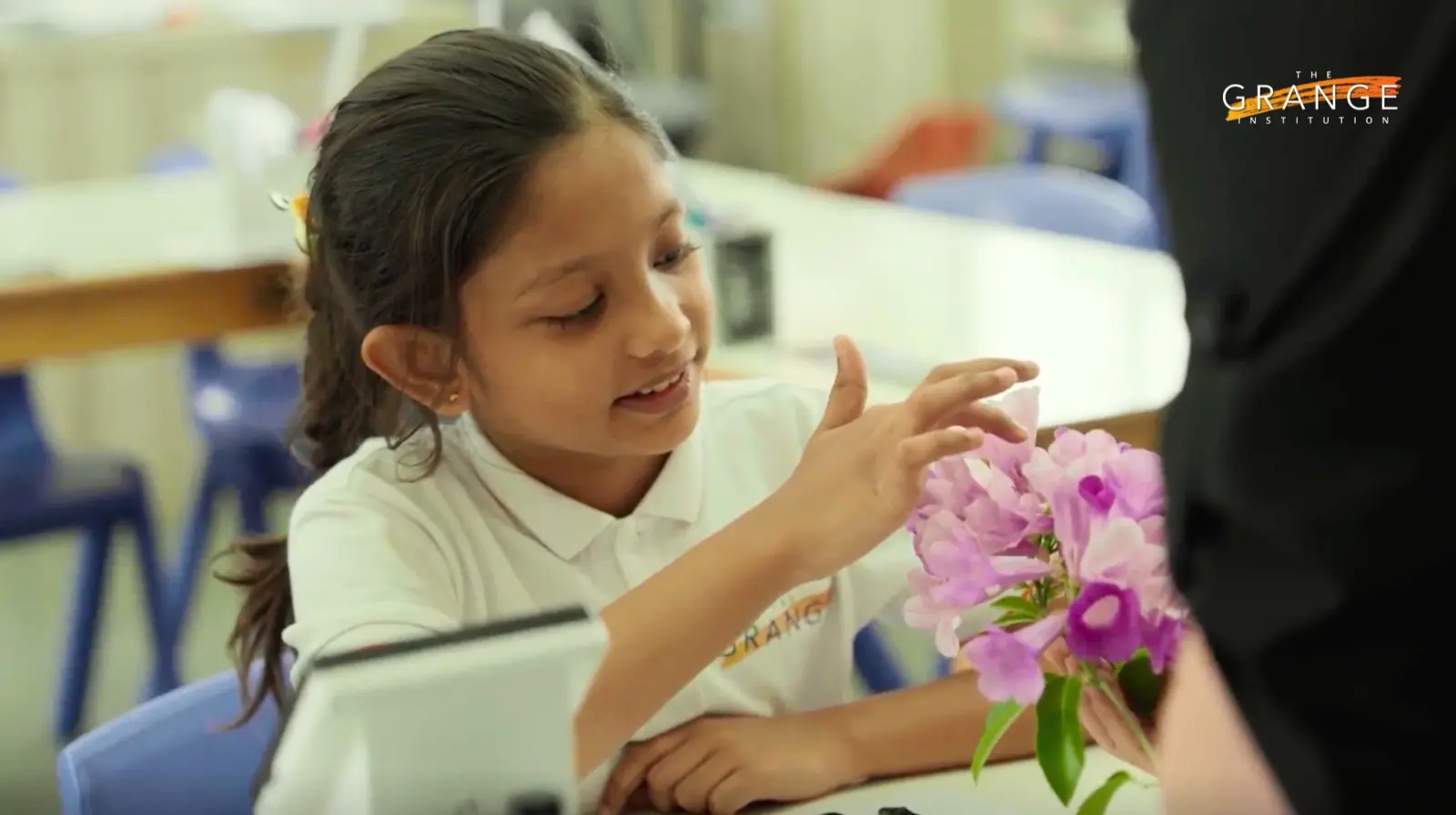Bridging the Gap, or Widening the Divide?
This is a think piece authored by Ms. Soh Bee Ling, Principal of The Grange Institution
Key Takeaways
- Equity and access remain key challenges, as unequal infrastructure and resources continue to widen the learning gap across different regions.
- Cultural sensitivity is crucial to ensure that technology complements, rather than conflicts with, diverse educational contexts.
- Striking the right balance between digital innovation and human connection preserves the essence of meaningful learning.
- The thoughtful integration of AI in education can empower students to thrive in both technological and real-world environments.
As we stand at the precipice of a technological transformation, artificial intelligence (AI) is reshaping the world we know. In my role as an educator and an advocate for using “Nature to Nurture”, and supporting the United Nations Sustainable Development Goal 4 (SDG 4) – Quality Education, which aims to ensure inclusive and equitable education for all, I find myself confronted with a pressing question: Is AI in education a force for equity, or is it inadvertently widening the divide between the privileged and the underserved?
AI and the Digital Divide
Fundamentally, AI aims to democratise access to information and resources. However, reality is far more complex. For communities in low-income and/or developing countries, access to AI remains out of reach. Many regions in these countries often struggle to offer even the most basic educational infrastructure, let alone the advanced technological frameworks required to enjoy the benefits of AI.
There are many villages in underdeveloped countries where access to electricity and internet connectivity is sporadic. How can these communities leverage AI-driven tools when they lack essential infrastructure to support them? The advancement of AI technologies is often concentrated in wealthier nations or driven by corporations with strong financial means. This creates a stark disparity, where the benefits of AI are more favourable to those who are already advantaged.
Cultural Insensitivity and Relevance
AI applications sometimes fail to consider local settings and cultural nuances. Tools developed in one region of the globe may not resonate with the values, traditions, or needs of communities elsewhere. In some cases, these tools may even perpetuate harmful stereotypes or reinforce existing disparities. For marginalised populations, a lack of cultural awareness might render AI useless or, worse, harmful to their educational advancement.
If neglected, these concerns could set back the global pursuit of SDG 4. The education gap could widen, pushing vulnerable populations even further behind. This, in turn, would have ripple effects on the employment market, since workers from developing countries face the threat of displacement by AI-driven automation. Lower-skilled and agricultural workers would be disproportionately affected, further deepening economic inequality.
Limiting the Quality of Classroom Experience
While AI offers undeniable benefits, over-dependence on AI may undermine fundamental teaching skills and reduce the human touch that lies at the heart of meaningful education.
Face-to-face interactions between teachers and students are irreplaceable. They foster empathy, collaboration, and communication—skills that are critical to thrive in an increasingly interconnected world. Similarly, outdoor learning and unstructured play are crucial for children’s holistic development.
We should advocate for the integration of AI in education to make teaching more effective and efficient. However, it is crucial that AI is applied mindfully and with limitations, focusing its use in areas such as administrative tasks and lesson planning.
The Importance of Outdoor Learning and Balanced Screen Time for Children’s Development

Studies have shown that outdoor learning and minimising or balancing screen time are critical in fostering children’s holistic A UNESCO feature on forest schools highlights how reconnecting with nature helps children recover from digital overload and rediscover the joy of hands-on learning. Engaging with nature and limiting digital exposure offers a wide range of cognitive, emotional, and physical advantages.
-
Enhanced Attention and Focus
- Nature’s Calming Effect
Natural environments have a restorative influence on the mind, reducing mental fatigue and improving concentration. Unlike the overstimulation caused by screens, which can overwhelm a child’s cognitive abilities, outdoor settings provide a calming setting that helps restore focus and attention spans. - Reduced Risk of Attention Disorders
Prolonged screen time has been linked to attention-related disorders, such as ADHD, as a result of rapid shifts in stimuli provided by digital devices. Reducing screen time and promoting outdoor activities help children develop healthy attention spans and self-regulation skills. - Promotes Creativity and Problem-Solving Skills
- Unstructured Play Stimulates Imagination
In contrast to scripted digital entertainment, outdoor play allows children to explore freely, invent games, and participate in imaginative scenarios. This form of unstructured play fosters creativity, adaptability, and original thinking. - Real-World Learning Opportunities
Nature presents unpredictable challenges, such as traversing uneven grounds or obstacles, which require critical thinking and adaptability. Such experiences allow children to develop resilience and problem-solving skills in ways that structured, screen-based activities cannot replicate. This is an integral part of environmental sustainability education, where learning extends beyond the classroom into the natural world.
- Unstructured Play Stimulates Imagination
- Nature’s Calming Effect
-
Supports Emotional Well-Being
- Stress Reduction
Research shows that natural environments can help lower cortisol levels, helping children manage stress and anxiety. In today’s digitally dominated world, outdoor activities provide a much-needed mental reset. - Boosts Mood and Emotional Resilience
Exposure to sunlight boosts serotonin levels, which improves mood and emotional stability. Engaging in outdoor activities, enjoying fresh air, and participating in unstructured play in natural settings foster a heightened sense of happiness and well-being, in contrast to the effects of passive screen time.
- Stress Reduction
Can AI Enhance These Benefits Further? The Case for “Balanced AI”
Although AI provides remarkable educational and developmental resources, it cannot substitute real-world experiences. Rather than viewing it as a threat to nature-based learning, adopting a ‘Balanced AI’ approach could integrate technology with fundamental human needs.
The challenges can still be addressed through teacher training, appropriate pedagogical adjustments, technical support, curriculum incorporation, and sufficient ethical standards. Balance, like many say, is always the key. Embracing this approach allows AI in education to complement, not compete with, natural, experiential learning.
Staying Real in an AI-Driven World

Human beings flourish when they engage in authentic experiences. Artificial intelligence ought to act as an enhancement rather than a replacement for these essential human needs. At an international primary school in Singapore, this balance can be intentionally nurtured, where students are encouraged to explore technology responsibly while still engaging with the world around them. By setting ethical guidelines, promoting conscious technology use, and allowing opportunities for outdoor exploration, we can guarantee that children grow in a well-rounded manner, equipped with relevant digital skills while remaining authentically human.
The future of education lies not in the choice between AI and nature, but in the thoughtful integration of both, ensuring that technological advancements enhance learning while preserving the essence of our humanity.







